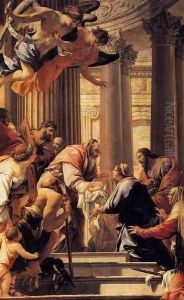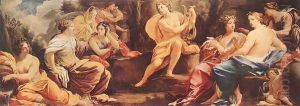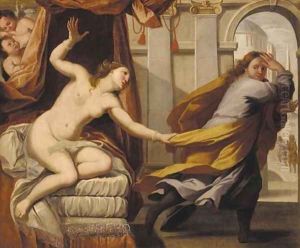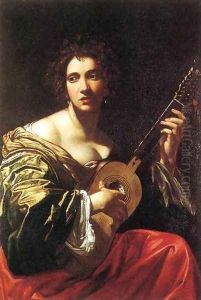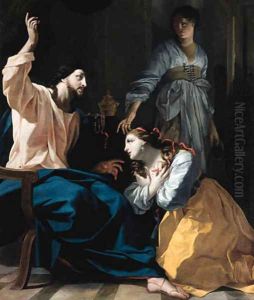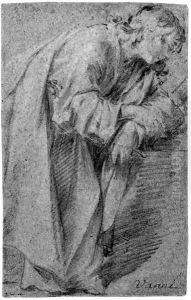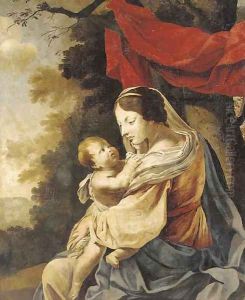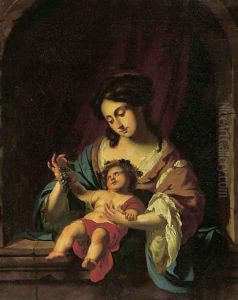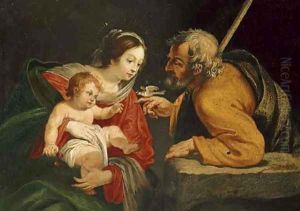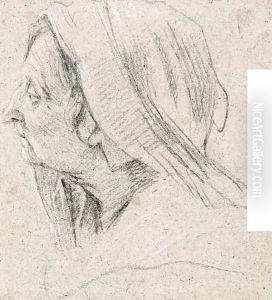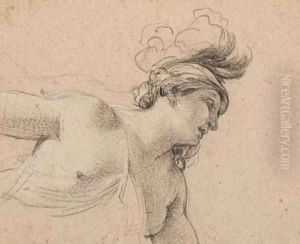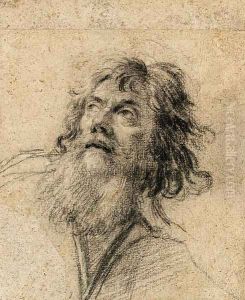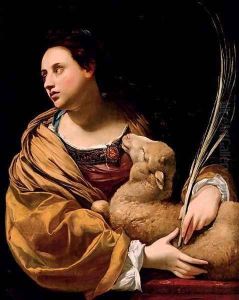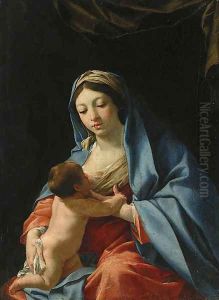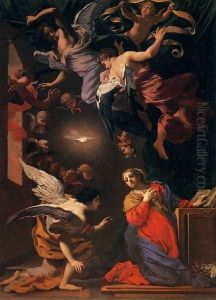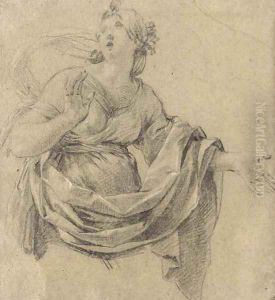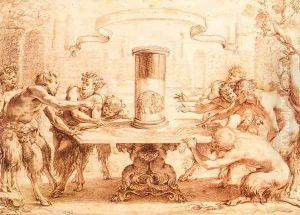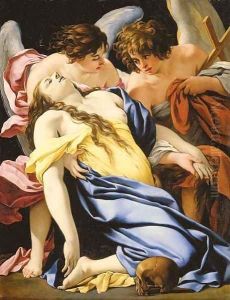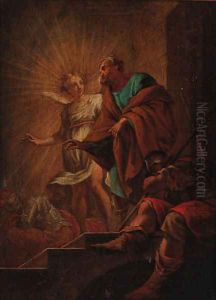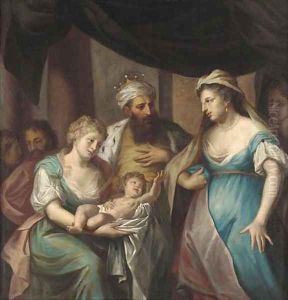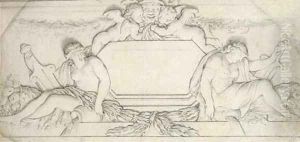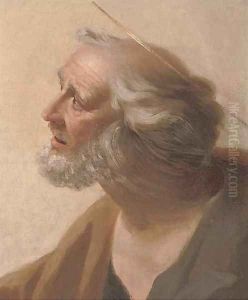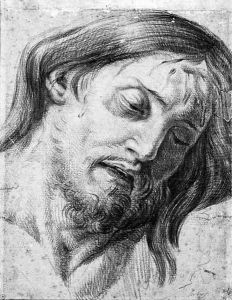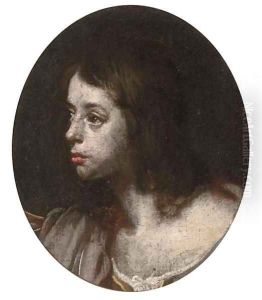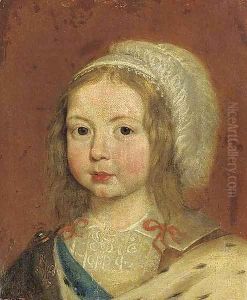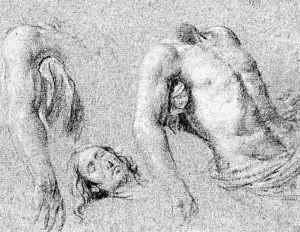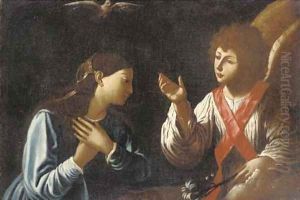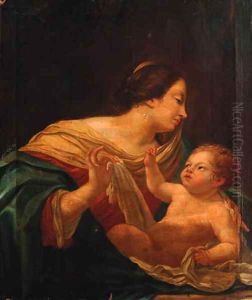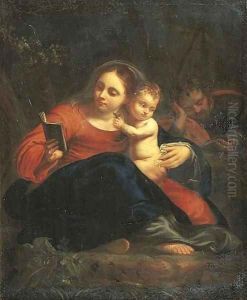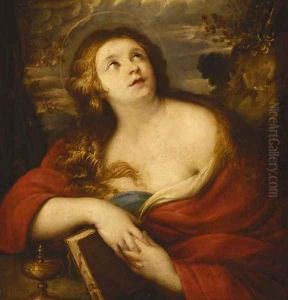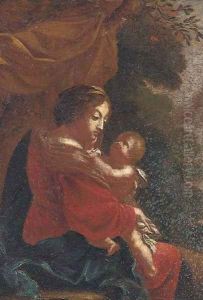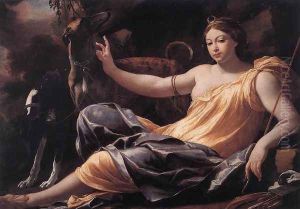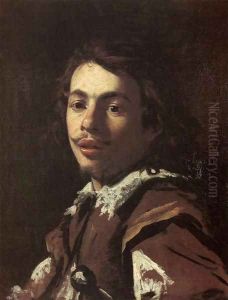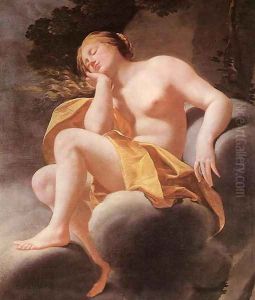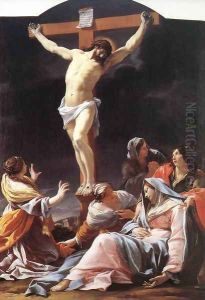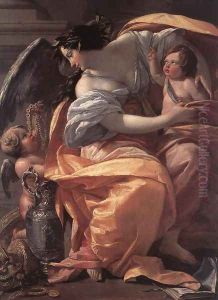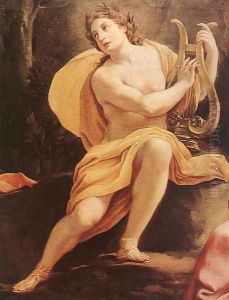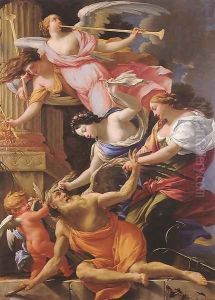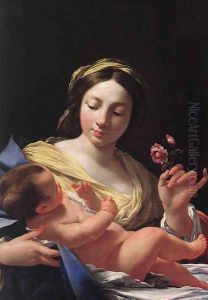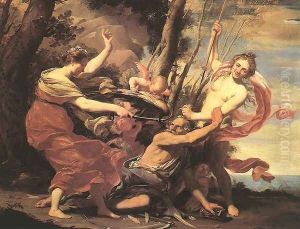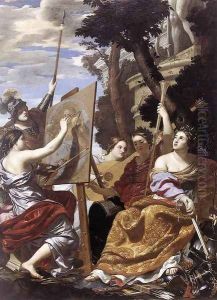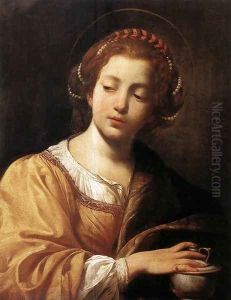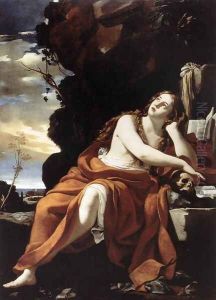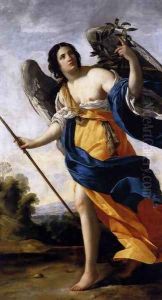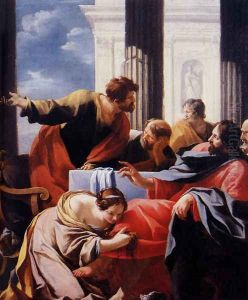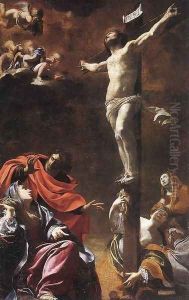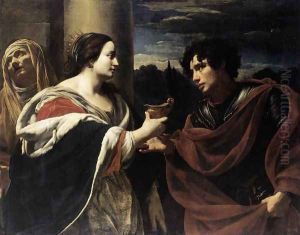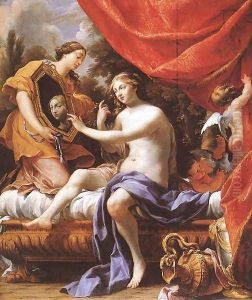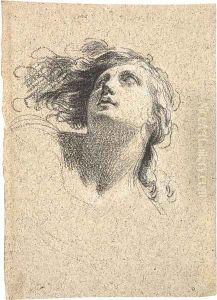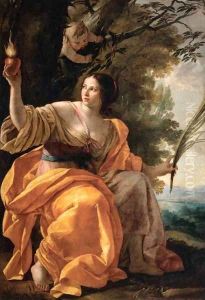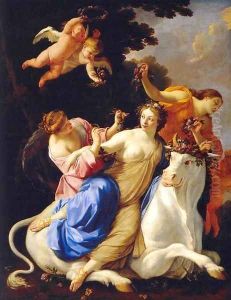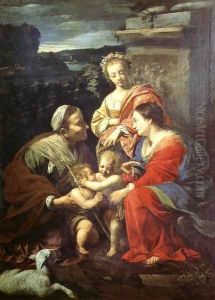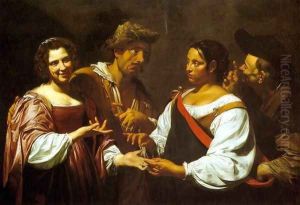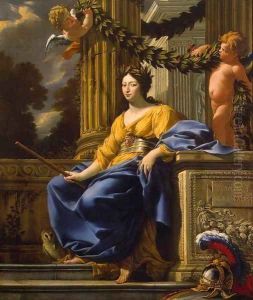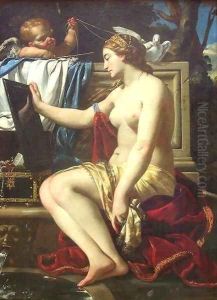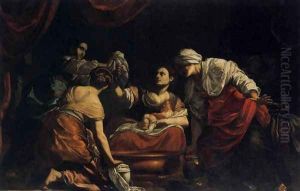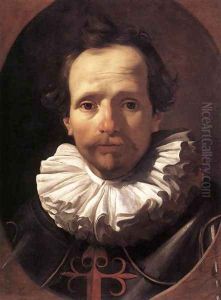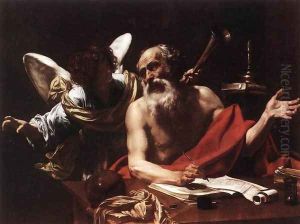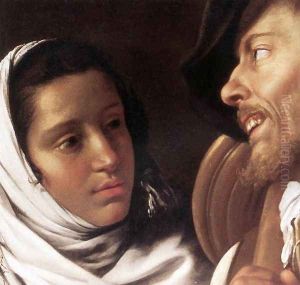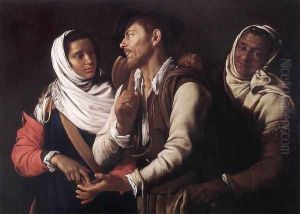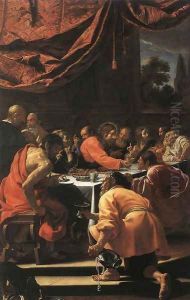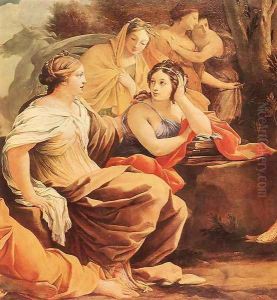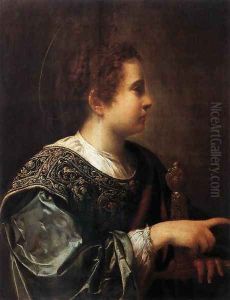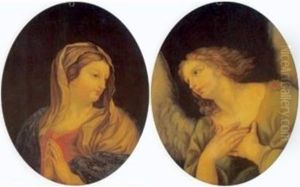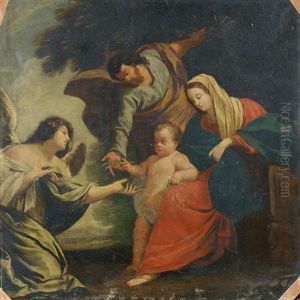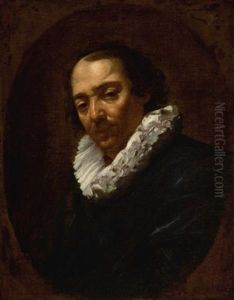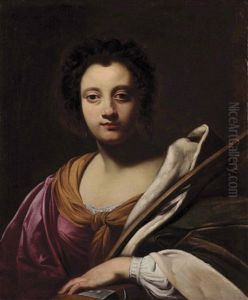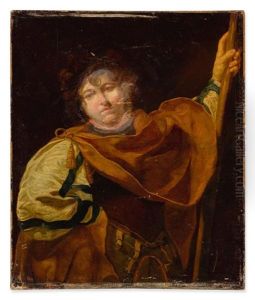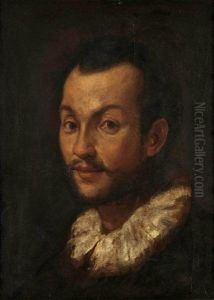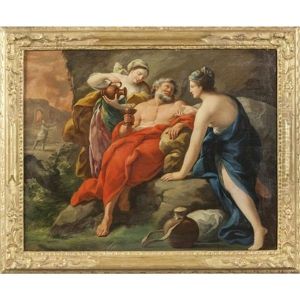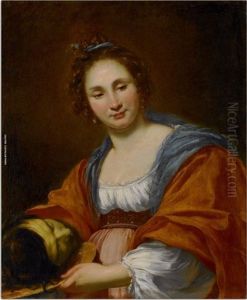Simon Vouet Paintings
Simon Vouet was a French painter and draughtsman who played a pivotal role in introducing the Italian Baroque style of painting to France. Born on January 9, 1590, in Paris, he was the son of a painter and showed artistic talent at an early age. Vouet's initial training was under his father, and he quickly garnered attention for his skill.
In 1611, Vouet traveled to England, but he spent most of his formative years in Italy, particularly in Rome, where he lived from 1614 until 1627. During this period, he absorbed the Italian Baroque style, characterized by its dramatic use of light and color, dynamic compositions, and emotional expressiveness. He was influenced by the works of Italian masters such as Caravaggio and the Carracci family.
Vouet became one of the leading painters in Rome and received commissions from prominent patrons, including the Barberini family and Pope Urban VIII. His Roman works include 'The Heavenly Charity' and frescoes in the chapel of the Palazzo Barberini. He was also a founding member of the Accademia di San Luca, an association of artists in Rome.
In 1627, Vouet was summoned back to France by King Louis XIII and was appointed as the King's Principal Painter. His return marked the introduction of the Baroque style to the French court, and he played a significant role in its dissemination throughout the country. Vouet's French works often featured a more subdued palette and softer lines, adapting the Baroque style to French tastes.
Among his notable works in France are the decorations for the Château de Saint-Germain-en-Laye and the Louvre Palace. His painting 'Presentation in the Temple' demonstrates his mastery of Baroque principles and his ability to translate them into the French context.
Vouet's influence extended beyond his own works, as he was also an esteemed teacher. His workshop was the largest in Paris, and he trained many young artists who would go on to become prominent figures in the French art scene, including Charles Le Brun and Nicolas Mignard.
Simon Vouet died on June 30, 1649, in Paris. His legacy lived on through his significant contributions to French art and his successful integration of Baroque elements into the French aesthetic. Today, his works can be found in major museums across the world, and he is recognized as a key figure in the development of 17th-century French painting.
